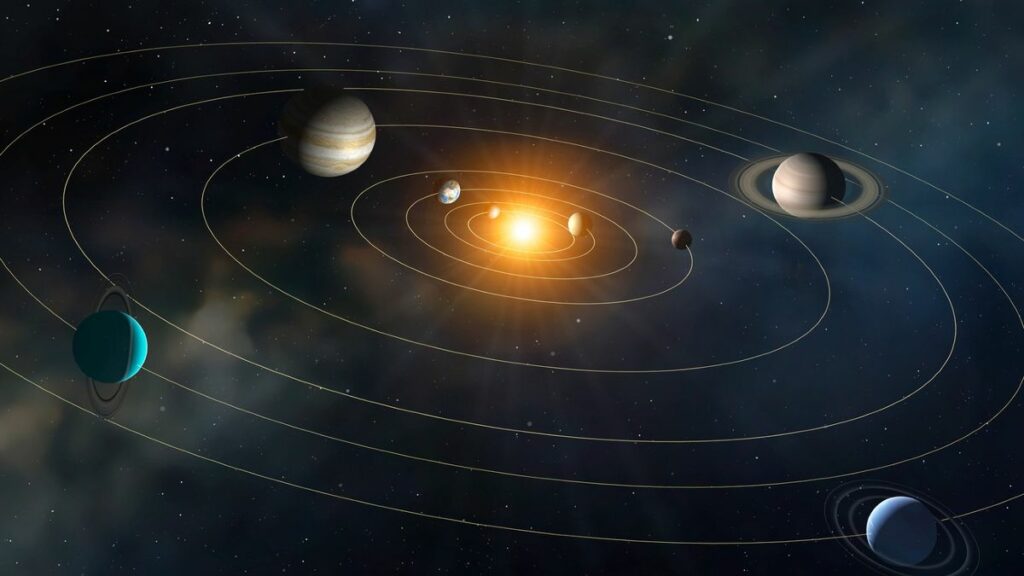Astronomers have reduced the potential hiding spots of ‘Planet Nine’ through a large-scale game of connecting the dots.
The scientists who initially put forward the hypothesis of Planet Nine have refined the potential hiding spot of this enigmatic colossal planet, following a thorough investigation of its theoretical orbit.

Scientists have made significant progress in narrowing down the possible location of the elusive “Planet Nine.” By eliminating over three-quarters of the suspected orbital pathway, researchers have honed in on a more precise area where they believe the planet may be hiding. After nearly a decade of searching, these scientists are optimistic that they will be able to locate the mysterious world within the next few years.
Planet Nine, also referred to as Planet X, is a hypothetical planet that is believed to exist in the outer regions of our solar system. The concept of Planet Nine was initially proposed in 2016 by astronomers Michael Brown and Konstantin Batygin from Caltech. Their hypothesis stemmed from the observation of peculiar orbits exhibited by objects in the Kuiper Belt, a vast collection of asteroids and comets beyond Neptune’s orbit. Through careful analysis, Brown and Batygin concluded that only the gravitational influence of a massive planet could account for these orbital anomalies.
Since then, Brown, Batygin, and their colleagues have made further advancements in understanding the enigmatic nature of Planet Nine. It is estimated to be approximately seven times more massive than Earth, making it the fifth-largest planet in our solar system. Additionally, it is believed to be situated at a distance of around 500 to 600 astronomical units from the sun, which is significantly farther than Earth’s distance from our star.
The elliptical orbit of Planet Nine remains a subject of uncertainty, with a potential completion time of 5,000 to 10,000 years and a probable slight tilt compared to the orbits of known planets. This ambiguity in its orbital cycle has hindered previous attempts to locate the planet. In a recent research paper published on Jan. 31 in the preprint database arXiv, Brown, Batygin, and Holman utilized data from the Pan-STARRS observatory in Hawaii to investigate Planet Nine’s suspected orbital path. Despite analyzing 78% of the expected region where Planet Nine may be located, the planet was not detected, as the remaining space is currently beyond the observatory’s reach. These preliminary findings are yet to undergo peer review. Brown stated, “We have eliminated most potential locations for the planet, and now face the challenging task of exploring the more distant areas.”

Using the Pan-STARRS data, the team meticulously examined the orbital pathway of Planet Nine on a monthly basis. The objective was to identify luminous objects that underwent positional changes every month.
Although seemingly straightforward, Brown pointed out that there are numerous celestial entities in the sky that experience monthly variations, such as asteroids and comets. Consequently, the process resembled a computationally intensive game of connecting the dots.
To ensure the detection of Planet Nine, the team introduced over 50,000 simulated Planet Nines into the data. They successfully “spotted” 99.9% of these decoy planets, indicating that the likelihood of having missed Planet Nine within the search region is extremely low. Consequently, the team believes that Planet Nine exists somewhere within the farthest 22% of its proposed orbital pathway.
Currently, Brown and Batygin are engaged in the “next level” of the survey, utilizing data from the Subaru Telescope in Hawaii. This additional data should enable them to explore the uncharted regions of space and enhance their confidence that Planet Nine is not within the already surveyed area.
If this endeavor proves unsuccessful, the forthcoming Vera C. Rubin Observatory, scheduled to commence operations in 2025, may provide assistance in locating the planet.
“I am confident that within a year of the telescope being operational, we will discover it,” Brown affirmed.
Do not forget to share your opinion with us to provide you with the best posts !



0 Comments